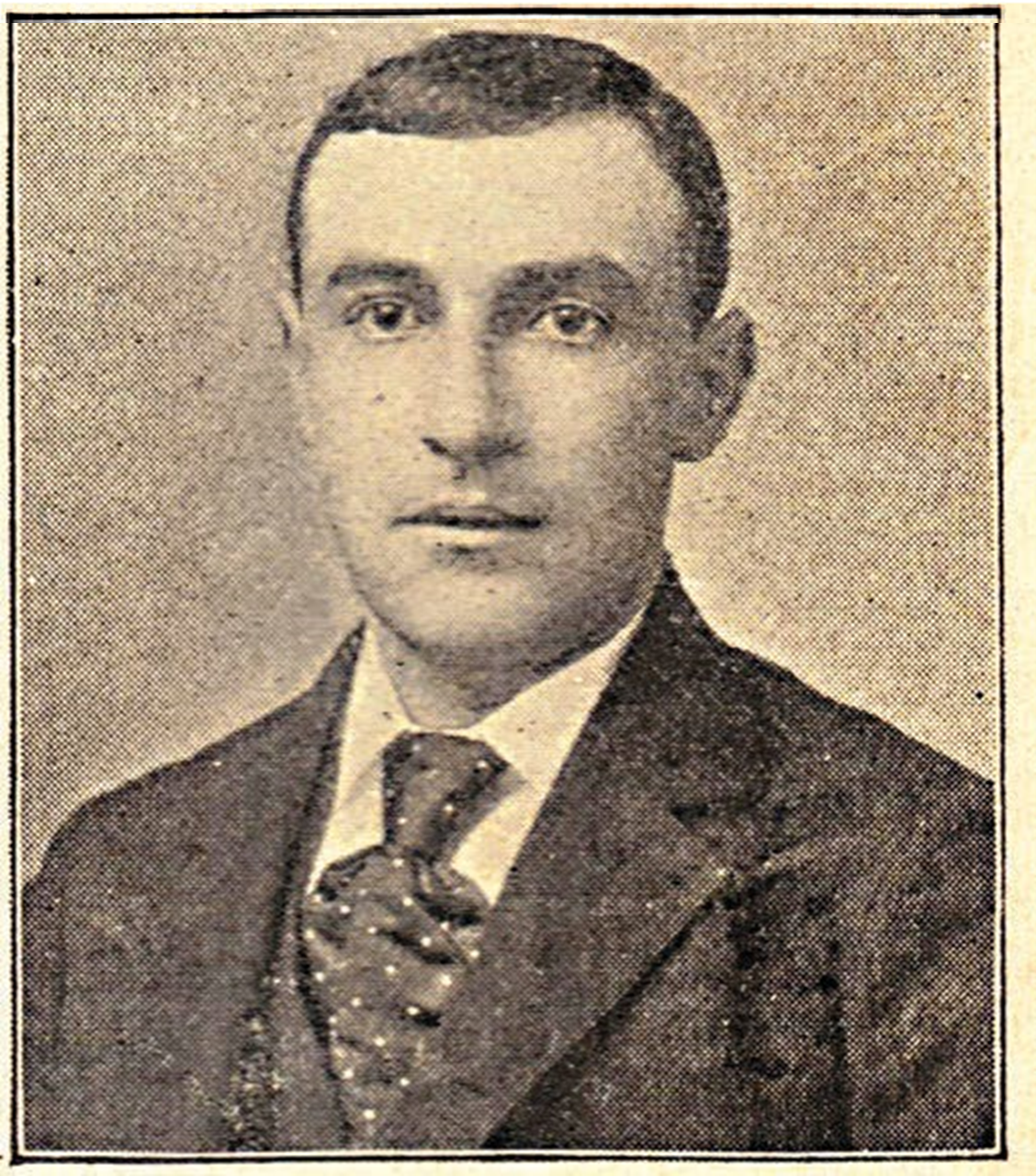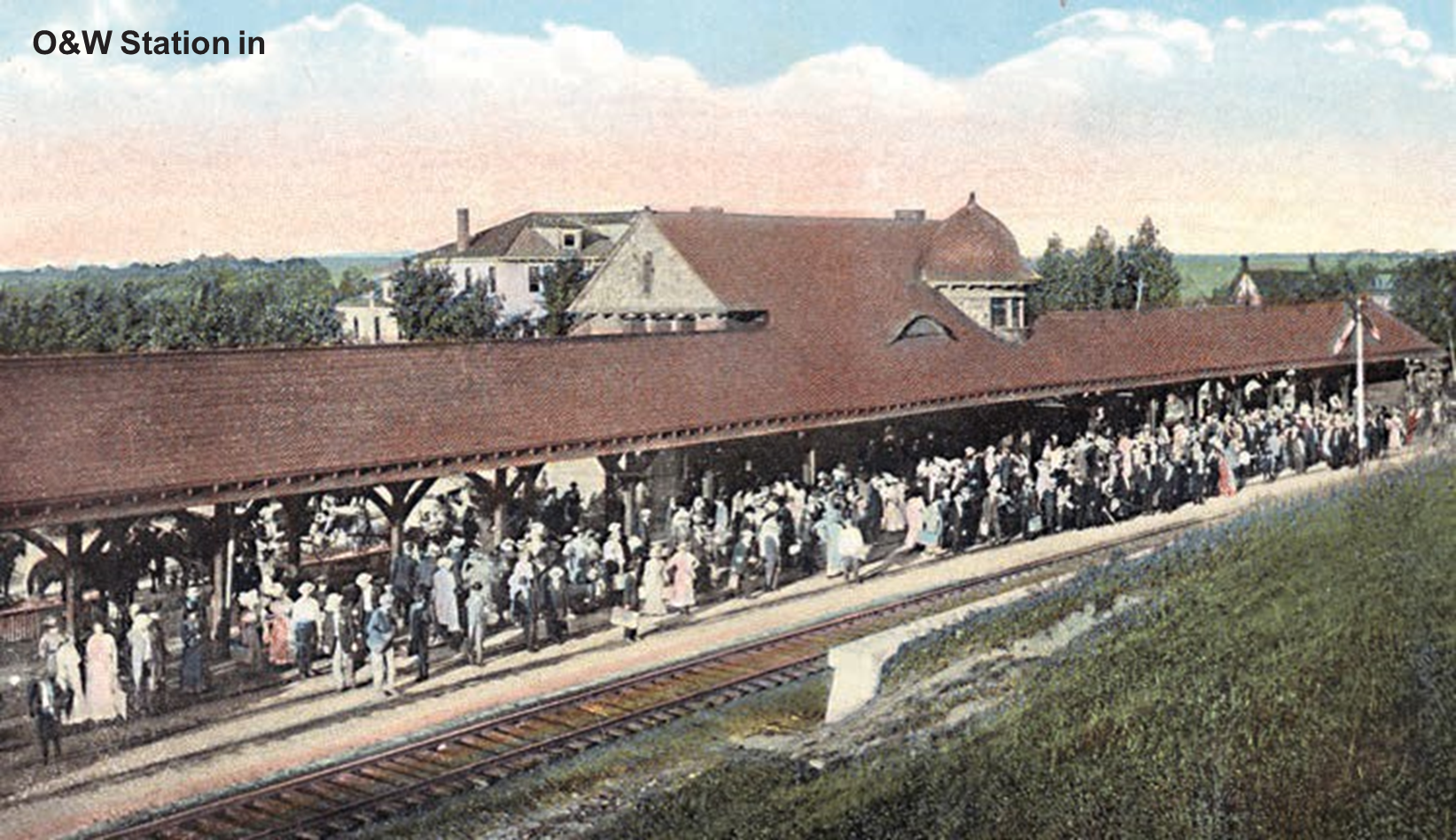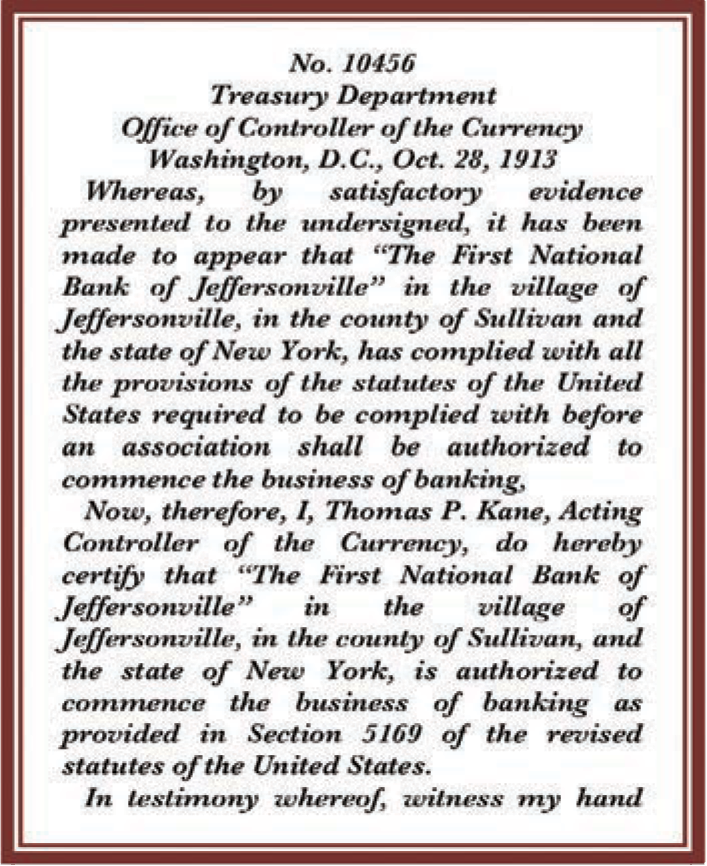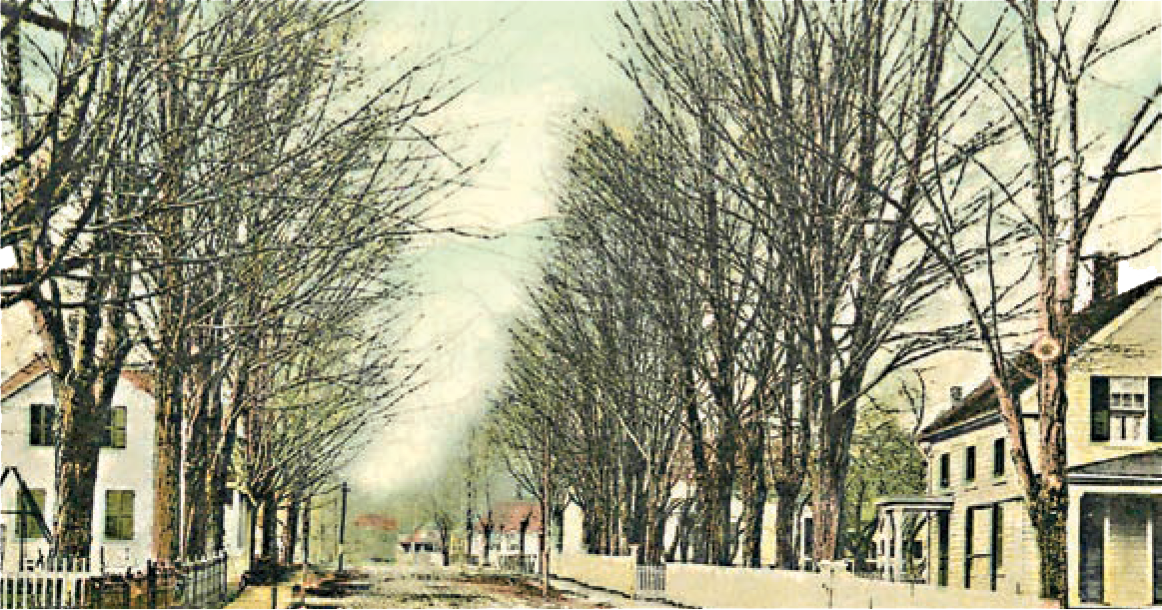Jeff Bank History
First President
Respected Jeffersonville businessman and politician Valentine Scheidell was the man chosen as the first president of The First National Bank of Jeffersonville. Scheidell was born in Jeffersonville on September 26, 1869, and grew up in the community where his grandfather, Frederick, had been one of the earliest settlers, operating a grist mill beginning in the 1840s. His father, also named Frederick, was longtime town of Callicoon Supervisor. Valentine Scheidell was involved in a number of business ventures over the years, including serving as the vice president of the unsuccessful Warrior Gold Mining Company of Liberty. In 1904, the company purchased 311 acres of land on the western slope of the Shawangunk Mountains near Ellenville which they believed contained a large amount of ore made up of considerable percentages of gold, copper, zinc, and lead. Not enough ore was ever found to make the mine commercially viable.
Scheidell, a Democrat, succeeded his father as Supervisor of the town of Callicoon beginning in 1898, becoming the Sullivan County Board of Supervisors youngest member, and later served as the Chairman of the Board. After many years in office, he declined his party’s nomination to run again in 1913, citing as his principal reason the fact that “the duties imposed upon him as supervisor had so multiplied that he found no time to devote to his private interests.”

In addition to his role in establishing the community’s new bank, he was in the creamery business with his uncle Charles Scheidell, and had purchased a number of failed creamery operations in the region in 1912, opening an office in Jeffersonville to run them. The Livingston Manor Times reported in its April 4, 1912 edition that “at the sale of the creameries of the Dairy Products Company which took place in Monticello Tuesday, Valentine Scheidell of Jeffersonville purchased the bulk of the creameries offered. Those properties included the Jeffersonville, Youngsville, Kenoza Lake, Callicoon and North Branch creameries. Last week in New York, Mr. Scheidell purchased the Galilee and Lookout, Pa., creameries.”
Valentine Scheidell died in 1935; he was 66.
Credit: John Conway and Debra Conway/History Prose/Barryville, NY.
The Inception
The year is 1913. Woodrow Wilson becomes the 28th president of the United States. The 16th Amendment to the U.S. Constitution is ratified, authorizing the federal income tax. And a redesigned Grand Central Station reopens in New York City, as the largest train station in the world.
O&W Station in Liberty
 It is a pivotal year in Sullivan County, as well. It is the peak year for passenger travel on the Ontario & Western Railway, which feeds the county’s major resorts. The decline in travel in subsequent years would signal the end of what had been nearly a quarter of a century of prosperous tourism in the area. And a disastrous fire strikes the village of Liberty on June 13th—Friday the 13th— destroying nearly half of the village’s business district.
It is a pivotal year in Sullivan County, as well. It is the peak year for passenger travel on the Ontario & Western Railway, which feeds the county’s major resorts. The decline in travel in subsequent years would signal the end of what had been nearly a quarter of a century of prosperous tourism in the area. And a disastrous fire strikes the village of Liberty on June 13th—Friday the 13th— destroying nearly half of the village’s business district.
Meanwhile, the small community of Jeffersonville, home to about 500 people, is poised to get electrical service for the first time. And The First National Bank of Jeffersonville receives its charter and unveils plans for a newly constructed, state-of-the-art, fireproof building on the corner of East Main Street and Maple Avenue.
The saga of The First National Bank of Jeffersonville began when five local businessmen – Louis P. Faubel, Henry U. Krenrich, Otto W. Meyer, and Charles and Fred Schmidt – applied for a charter to establish a local bank. At that time, most people in the community who utilized banking services did so either in Callicoon or in Liberty.
On August 28, 1913, Jeffersonville’s weekly newspaper, the Sullivan County Record, ran a story on its front page announcing that the petition for the bank had been granted.
“The comptroller of the currency has granted the application for the organizing of The First National Bank of Jeffersonville. The directors and officers of the bank have not yet been selected, but in all probability the president will be Val Scheidell, who is the moving spirit in this enterprise as he is and has been in all other important projects in this community. Plans are being completed for the new two story concrete bank building which is to grace the northeast corner of East Main Street and Maple Avenue.”
When the first directors and officers were chosen on September 8, Valentine Scheidell, businessman, entrepreneur, and longtime supervisor of the town of Callicoon, was indeed chosen as bank president, while William B. Vorhees of Roscoe was selected vice president and Charles Schmidt cashier. Other directors included: William F. Heinle of Cochecton Center; Grover M. Hermann of Callicoon; George DeLap of Kenoza Lake; and Otto W. Meyer, Henry U. Krenrich, and Robert B. McGinn, of Jeffersonville. These men served until the first annual meeting of stockholders was held the following January.

Open for Business
On Monday, January 5, 1914, The First National Bank of Jeffersonville opened for business in its still unfinished building on the corner of East Main Street and Maple Avenue. The bank’s counters and desks had been delayed in shipping and temporary partitions and desks had to be pressed into service. Seventy-five accounts were opened the first day, and nearly $10,000 in deposits was received. The Sullivan County Record reported that was “considered very favorable for this time of year.” More than $20,000 was deposited in the six days of the bank’s operation.
The paper also reported:
“The first depositor was George DeLap of Kenoza Lake. As George engineered the construction of the fine bank building, it is but natural that he would wish to be the first depositor…The finishing touches were put on the interior walls of the bank building this week. The exterior will be finished up with a wash when warmer weather permits. Joseph Rapp, marble cutter, on Tuesday finished the job of carving the name of the bank in raised letters across the front of the building.”

When the new bank’s stockholders held their first Annual Meeting on January 13, 1914, a new, expanded slate of directors was elected, and in addition to the original nine, Jeffersonville physician Dr. J. Cameron Gain, John Townsend, one time Neversink Supervisor Dr. W.H.H. Hoar of Grahamsville, Judge George H. Smith of Woodbourne, and Michael E. Galligan of Forestburgh were chosen. The Record editorialized that the group “represented every section of the county, which augurs well for the prestige and prospects of the new bank.”
Credit: John Conway and Debra Conway/History Prose/Barryville, NY
Banking History
When Jeff Bank, formerly known as The First National Bank of Jeffersonville, was officially chartered in October of 1913, there were already a number of banks operating in Sullivan County. A few, such as the National Union Bank in Monticello, founded in 1850, and the Sullivan County National Bank in Liberty, established in 1893, dated back to the 19th Century, but most had been established less than a decade before.
Sullivan County had been enjoying a period of unparalleled prosperity since around 1890, as the railroads had helped establish the region as a tourist destination. During this time, hundreds of small hotels and thousands of farmhouses had begun entertaining summer visitors from the New York metropolitan area. Many hotels and farmhouses, often with a financial incentive from the railroad, built additional rooms to accommodate even more guests. With all the ensuing economic activity, the need for hometown banks increased.
By the end of the 1920s, many of the small communities in the county, such as Livingston Manor, Roscoe, Callicoon, South Fallsburg and Woodridge, had established their own banks, while Monticello and Liberty were each home to more than one. The local banking world was a fairly stable one, even through the decline of the resort industry in the 1920s, the Great Depression of the 1930s and the World War of the 1940s.
New growth comes to the region
Nationwide prosperity following the end of World War II brought new growth to the region, which saw an even more booming resort industry take shape. This also boosted the profitability of the local banks. By 1953, the county was home to 538 hotels, 1,000 rooming houses, and 50,000 bungalows, and with an estimated two to three million vacationers each summer, the resort industry was reportedly responsible for adding more than $150 million a year to the local economy. It was reported that one of the county’s largest hotels handled so much money each week that it had to spread its banking business among four different local banks.
In 1962, the region’s economy was still a vibrant one with no end to the prosperity in sight, and there were at least eleven small community banks operating in Sullivan County. Throughout the early 1960s, however, things began to change, as some of the smaller community banks were absorbed by larger counterparts.
Mergers and acquisitions
The Livingston Manor Bank was one of the first to go, being acquired by Sullivan County National Bank of Liberty in 1962. They also acquired the First National Bank and Trust Co. of Roscoe. First National Bank of Callicoon acquired First National Bank of Narrowsburg and changed their name to United National Bank in 1964. Liberty National Bank acquired South Fallsburg National Bank. Other local banks merged with much larger operations from out of the region. Sullivan County Trust Company in Monticello, for example, took over a Port Jervis bank in 1964 and become known as Intercounty Trust, and then merged with the much larger and rapidly growing County Trust of White Plains in 1966. County Trust was already one of the 55 largest banks in the country, and had 52 branches in Westchester, Putnam, and Rockland Counties by the time it moved into Sullivan County. The merger meant that the Monticello bank would thereafter operate under the larger bank’s name and charter.
This was a fairly typical scenario, and since these types of mergers usually meant that a local bank’s senior management would be headquartered in some distant city, approval of the mergers often included the provision that a “local advisory board” be established in the community to keep the bank’s out-of-town management apprised of local conditions and to “preserve the community bank atmosphere.” Despite such advisory boards, however, the newly configured banks were community banks only in the sense that they operated a facility within the community.
Rarely in such cases did loan or mortgage approval rest solely in local hands, for example. Connections between bankers and customers, many established over decades, were broken and, in some instances, the days of a customer doing business with a banker who was also a neighbor were ended.
Sullivan County was changing, too. Hundreds of hotels and thousands of bungalows vanished in little more than a decade, and the resorts that continued to operate were struggling to survive. The 1970s and ‘80s were difficult for the county economically.
By the end of the 1980s, even the oldest of Sullivan County’s local banking institutions, National Union Bank in Monticello and Sullivan County National Bank in Liberty, were gone, having been taken over by Key Bank and Norstar Bank, respectively. As the 21st Century arrived, all but one of the eleven community banks that had been in operation in 1962 had vanished. Only The First National Bank of Jeffersonville remained.
Jeff Bank – The Survivor
The First National Bank of Jeffersonville had continued to concentrate on maintaining its independence while growing beyond the village of Jeffersonville. The Bank opened its first branch in Eldred in 1967, and eventually expanded throughout the county, establishing a total of twelve branches from Callicoon to Bloomingburg. In doing so, Jeff Bank brought community banking back to many of the communities, such as Callicoon, Narrowsburg, Livingston Manor, and Liberty, which had lost their own local banks in the years before.
In keeping up with the times, the Bank installed a Burroughs computer in the new Operations Center in 1984. From that seed has grown Internet banking, online bill paying, telephone banking as well as a network of ATMs. Customers take advantage of the ability to access accounts, transfer funds and pay bills at their own convenience, twenty-four hours a day.
By the end of 2012, the decision to convert the Bank from a national to a New York State charter was completed. The trademark name of Jeff Bank, which had been in use since 2008, now became the Bank’s legal name.
By offering residents convenient and secure banking, by making customer satisfaction the ultimate goal, and by forging special relationships with its customers—its neighbors—Jeff Bank has become a trusted Sullivan County tradition, a tradition that is now one hundred years old.
Credit: John Conway and Debra Conway/History Prose/Barryville, NY


